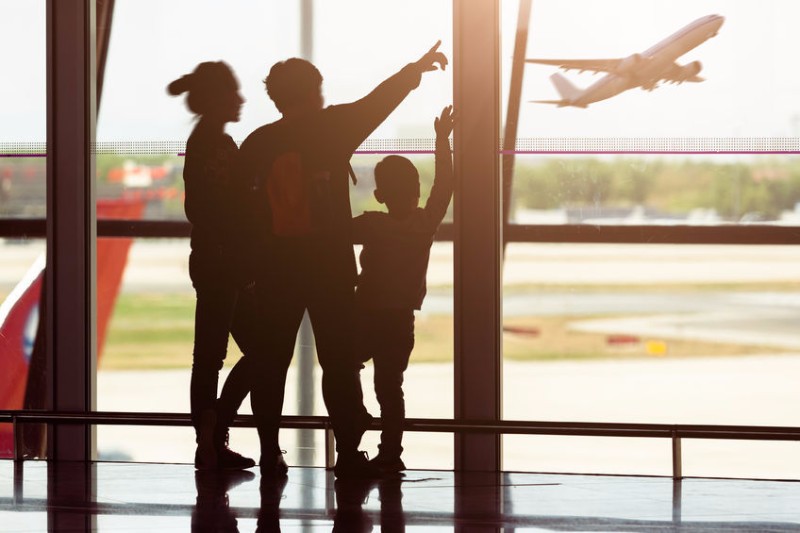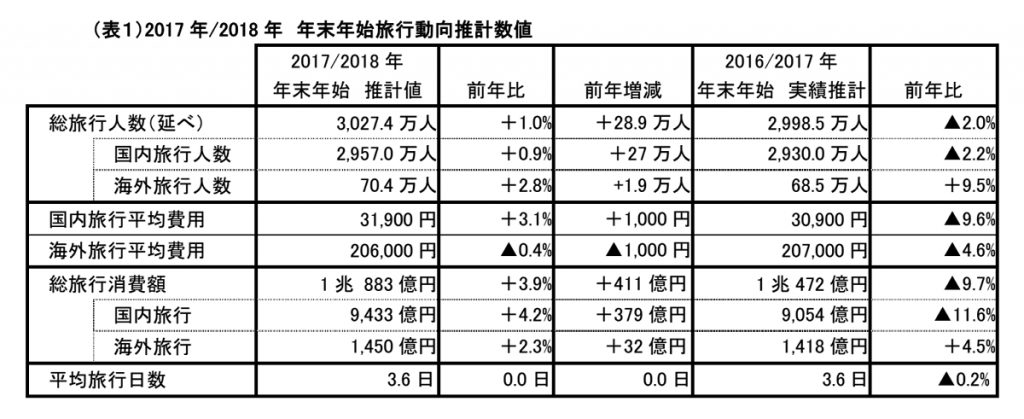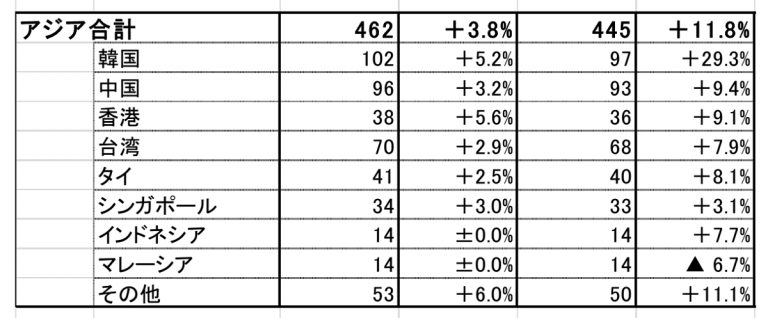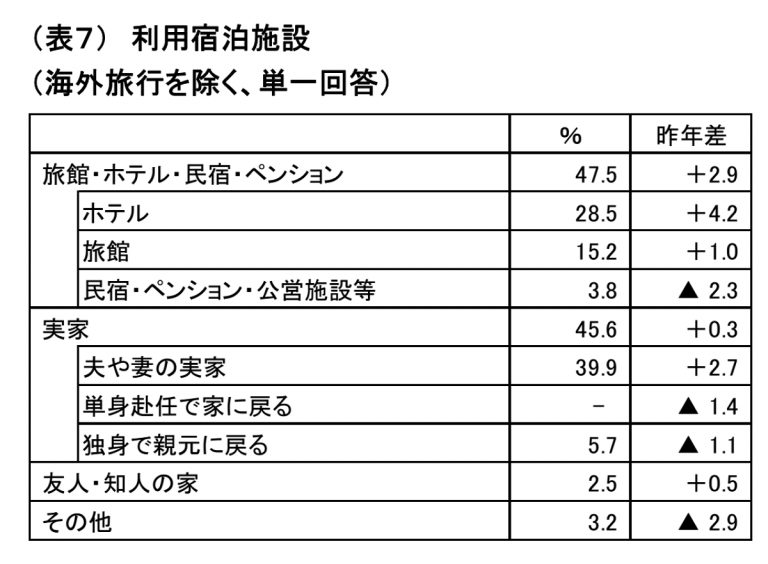
JTB has forecast that the number of Japanese travelers during the 2018 New Year holidays (23 December 2017 to 3 January 2018) will increase by 1.0% year on year, reaching 30.3 million, approximately 289,000 more travelers than a year earlier.
Out of this total, the number of Japanese overseas travelers is expected to increase by 2.8%, reaching a 704,000 record high, and travelers in Japan by 0.9%, reaching 29.6 million.
JTB also estimated that travel spending will increase by 3.9%, totaling JPY 1,088 billion, including JPY 145 billion for overseas travel (+2.3%) and JPY 943.3 billion for travel in Japan (+4.2%). The average spending forecast for a traveler is JPY 206,000 for overseas travel (-0.4%) and JPY 39,000 for travel in Japan (+3.1%). The average number of travel days is 3.6.

JTB's analysis suggests that the travel market benefited from a good sequence of holidays, a gradual economic recovery, and the first increase in winter bonuses in the past three years. However, JTB indicated that many consumers do not benefit enough from the economic rebound to increase their travel spending.
JTB's questionnaire on travel during the New Year holidays included results such as: 38.3% answered "no difference between this New Year holiday and the last New Year holiday". The ratio of answers for "same travel days as a year ago" was 12.6%. The ratio of answers for "more income than a year ago" was 12%, 2.9 points higher than a year ago. The ratio of answers for "spending more luxuriously with more money this year" was 10.2%, higher than the 6.6% for "spending more simply with less money this year."
The busiest days for departures overseas should be December 29 and 30. The number of bookings for January 2 and 3 has been increasing because cheaper air tickets are available.
The number of travelers should increase for all destinations except Guam/Saipan (29,000 or -9.7%): 462,000 for Asia (+3.8%), 56,000 for North America (+1.8%), 63,000 for Hawaii (+1.6%), 54,000 for Europe (+1.9%), 28,000 for Oceania (+3.7%), and 12,000 for Middle East, Africa and Latin America (+9.1%).
The table below shows the estimated number of travelers for countries in Asia:

Regarding travel in Japan, the busiest departure day may be December 30 (20.3%), followed by December 31 (18.4%) and January 1 (12.0%).
The questionnaire shows that the number of travelers for more than a weekend (e.g. three days and two nights or four days and three nights) will increase. The major purpose is homecoming, staying at the home of one's parents.
Meanwhile, JTB points out that more diversified options motivate people to travel in Japan: the questionnaire shows that more travelers are interests in talks about accommodation, popular tourist trains or outdoor activities.
The major transportation means for travel in Japan are private cars (69%), followed by Shinkansen trains (16.5%), legacy airlines (11.4%), highway buses (3.2%), and LCC (1.3%).
The table below details the accommodation used during a Japan trip:





